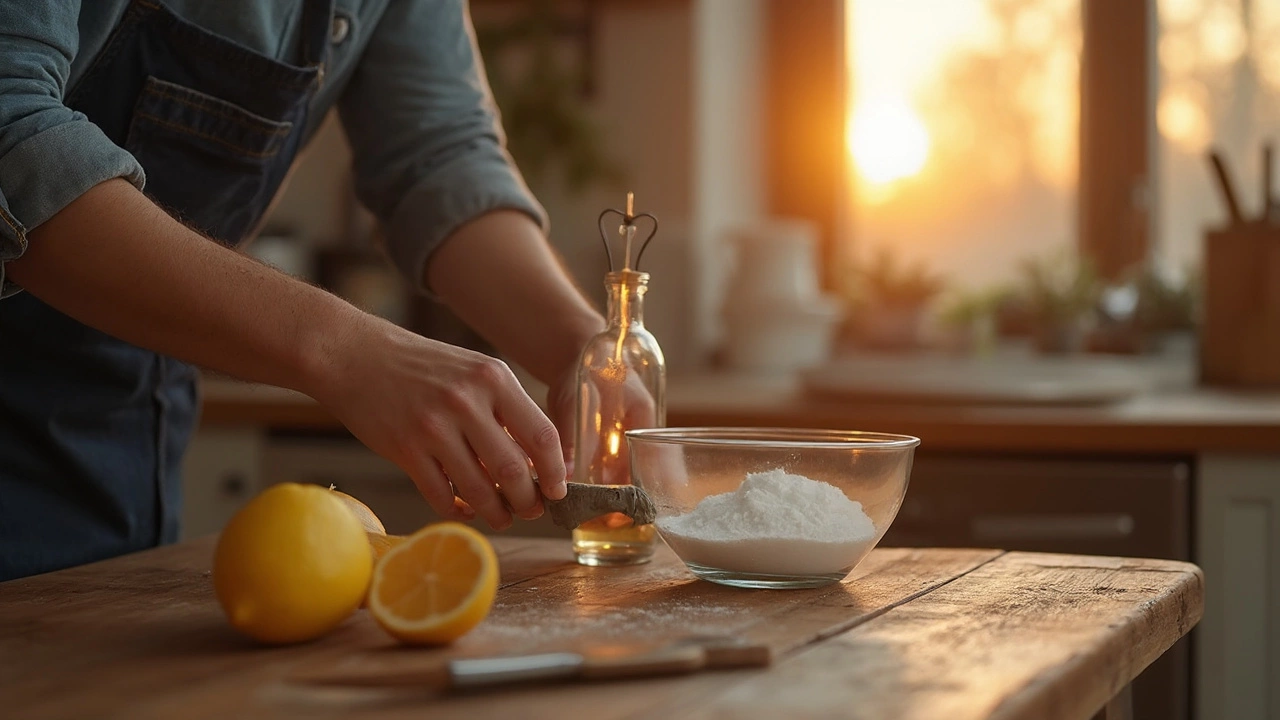Homemade Oven Cleaner: Simple Recipes That Really Work
If you’re tired of pricey store cleaners and harsh chemicals, you’ve come to the right spot. The oven is a magnet for baked‑on grease, stubborn brown stains, and clogged glass doors. The good news? You can smash those problems with everyday kitchen items – no fancy equipment needed.
Why Baking Soda and Vinegar Are Your Best Friends
Baking soda is a mild abrasive that lifts grease without scratching surfaces. It also neutralises acids, which helps break down burnt food. Vinegar, on the other hand, is an acid that softens grime and kills lingering odor molecules. Together they create a fizzing reaction that loosens debris, making it easy to wipe away.
To start, mix half a cup of baking soda with a few tablespoons of water until you get a thick paste. Spread the paste over the oven walls, the bottom tray, and any area with visible grime. Let it sit for at least 30 minutes – longer if the stains are really set in. While the paste works, fill a spray bottle with equal parts white vinegar and water. After the waiting period, spray the vinegar over the baking soda. You’ll see a gentle fizz; that’s the chemical reaction breaking down the grease.
Grab a soft sponge or a non‑scratch scrub pad and wipe the mixture away. Rinse the sponge frequently to avoid re‑spreading grease. For the glass door, use the same paste but apply it with a soft cloth to prevent scratches. If the brown stains are stubborn, press a clean, damp cloth over the area for a few minutes after spraying vinegar – the extra moisture helps the acid work deeper.
Extra Tricks for Stubborn Grease and Stains
Sometimes baked‑on grease is thick enough to act like paint. In those cases, add a splash of lemon juice to your baking soda paste. The citric acid adds extra power and leaves a fresh scent. For extra heat, turn your oven to a low warm (about 100°C / 210°F) for ten minutes after applying the paste; the warmth speeds up the reaction.
If you prefer a completely liquid solution, combine one cup of vinegar, one cup of water, and a tablespoon of dish soap in a spray bottle. Spray all surfaces, let sit for 15 minutes, then scrub with a sponge. This works well for quick clean‑ups between deep cleans.
Remember to always ventilate the kitchen while you work – open a window or run the exhaust fan. Even though these ingredients are safe, the fumes from heated vinegar can be strong.
When the oven looks shiny and the glass door is clear, wipe everything down with a clean, damp cloth to remove any leftover residue. Finish with a dry towel to prevent streaks.
DIY cleaners are great for regular maintenance, but some grime needs a professional touch. If you’re short on time or the build‑up is extreme, Fortis Cleaning Solutions can handle the heavy lifting. Their eco‑friendly approach means they’ll use safe products that match the spirit of your homemade recipes.
Now you have a handful of cheap, effective recipes to keep your oven looking brand new. Grab that baking soda, a bottle of vinegar, and start scrubbing – your oven (and wallet) will thank you.

Best Homemade Oven Cleaner: Easy DIY Methods for a Sparkling Oven
If you’re tired of the chemical stench left behind by store-bought oven cleaners, there’s hope in your kitchen cabinets. This article digs deep into the science and strategy behind the best homemade oven cleaners, showing you exactly what works, why it works, and how to use simple ingredients like baking soda and vinegar for professional-level results. Along the way, you’ll pick up practical tips, bust some myths, and learn tricks that even seasoned home cooks may never have heard. By the end, you’ll know how to make your oven shine without putting your lungs—or your wallet—through the wringer.
Read More